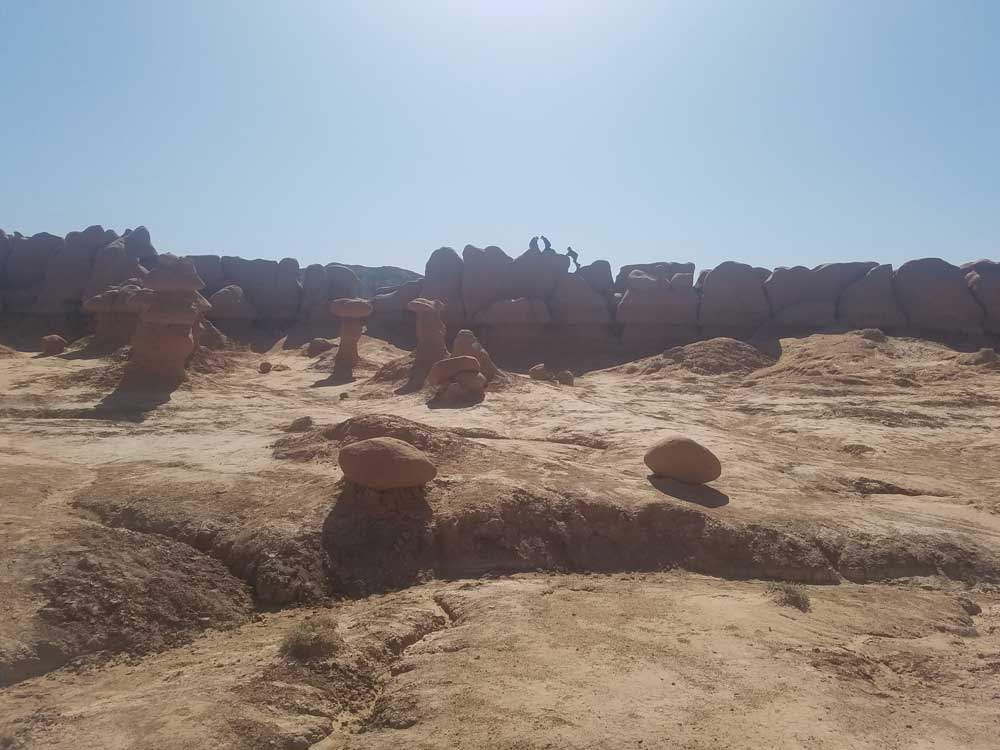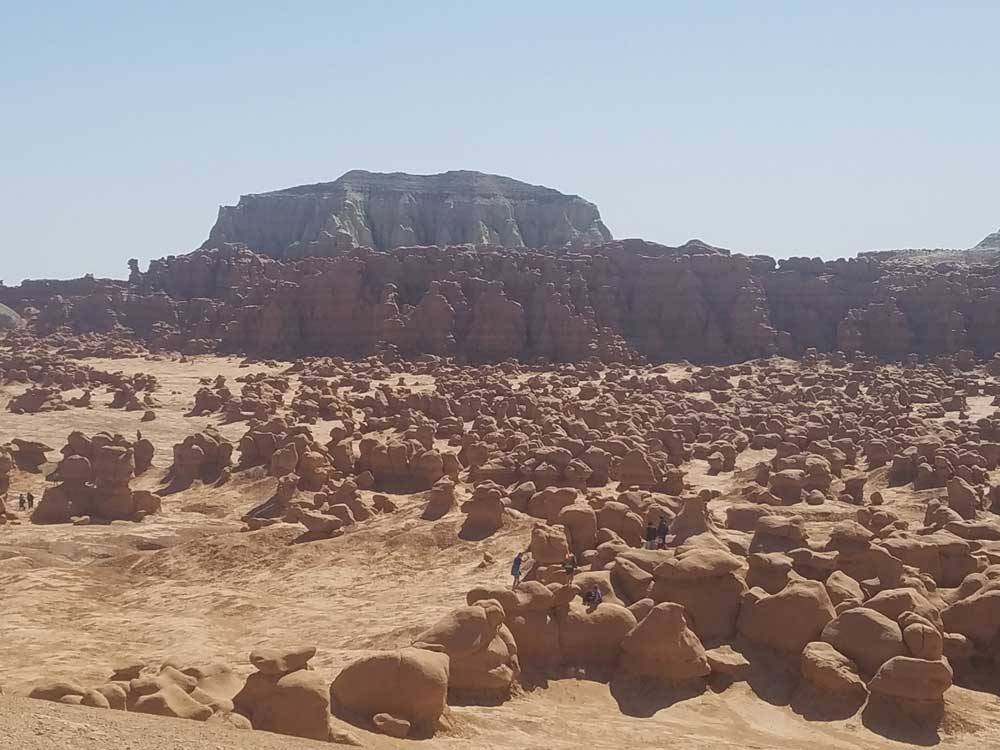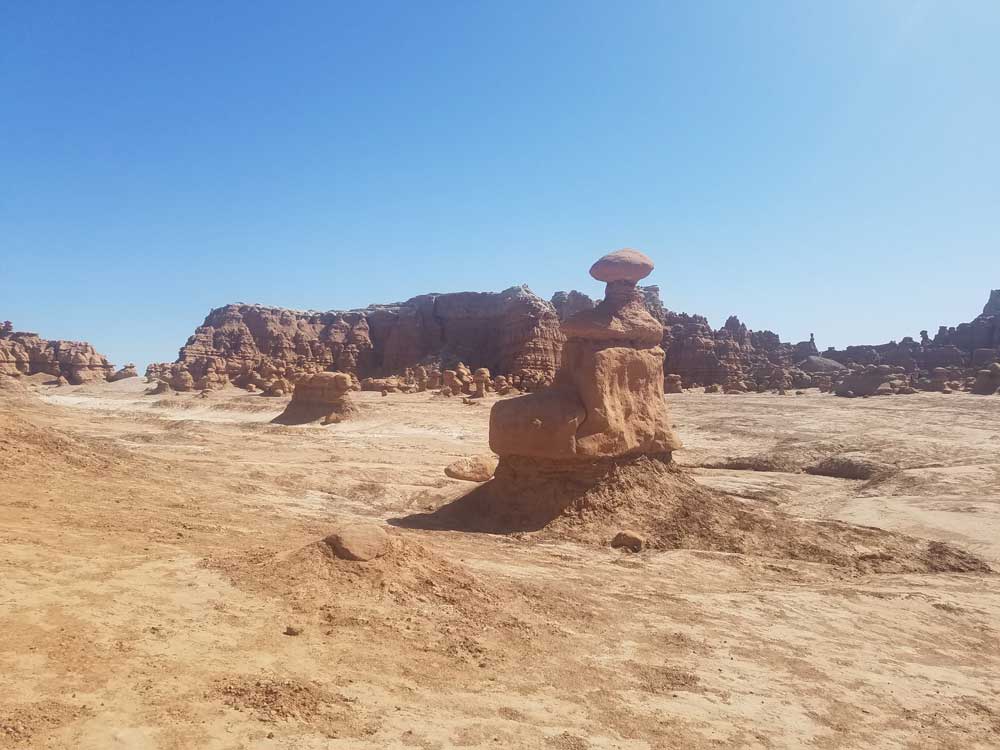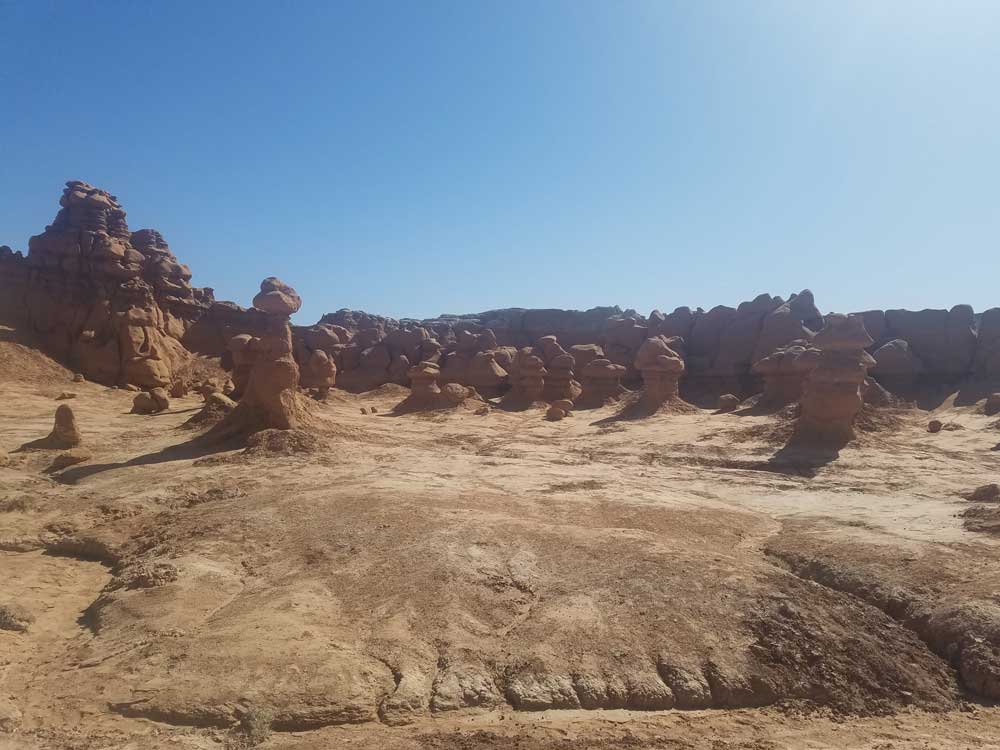State park featuring thousands of hoodoos, referred to locally as goblins, which are formations of mushroom-shaped rock pinnacles, some as tall as several yards
From Moab (101 mi): Take E 100 N to US-191 N/N Main St. Follow US-191 N and I-70 W to UT-24 W in Emery County. Take exit 149 from I-70 W. Continue on UT-24 W. Drive to Goblin Valley Rd.
Goblin Valley State Park is a state park in Utah featuring thousands of hoodoos, referred to locally as goblins, which are formations of mushroom-shaped rock pinnacles, some as tall as several yards (meters). The distinct shapes of these rocks result from an erosion-resistant layer of rock atop relatively softer sandstone. Goblin Valley State Park and Bryce Canyon National Park, also in Utah about 190 miles (310 km) to the southwest, contain some of the largest occurrences of hoodoos in the world.
The park lies within the San Rafael Desert on the southeastern edge of the San Rafael Swell, north of the Henry Mountains. Utah State Route 24 passes about four miles (6.4 km) east of the park. Hanksville lies 12 miles (19 km) to the south.

History
Evidence of Native American cultures, including the Fremont, Paiute, and Ute, is common throughout the San Rafael Swell in the form of pictograph and petroglyph panels. Goblin Valley is noted for several rock art panels, as well as the rock formations. The secluded Goblin Valley was then found by cowboys searching for cattle. Then, in the late 1920s, Arthur Chaffin, later owner/operator of the Hite Ferry, and two companions, were searching for an alternate route between Green River and Caineville. They came to a vantage point about 1 mile (1.6 km) west of Goblin Valley and were awed by what they saw - five buttes and a valley of strange, goblin-shaped rock formations surrounded by a wall of eroded cliffs. In 1949, Chaffin returned to the area he called Mushroom Valley. He spent several days exploring the mysterious valley and photographing its scores of intricately eroded rocks.
Publicity attracted visitors to the valley despite its remoteness. In 1954, it was proposed that Goblin Valley be protected from vandalism. The state of Utah later acquired the property and established Goblin Valley State Reserve. It was officially designated a state park on August 24, 1964. In 2019 the state park was expanded by adding 6,261 acres of federal land.
The flora of Goblin Valley include Mormon tea, Russian thistle, Indian ricegrass, and various cacti, as well as junipers and pinyon pines at higher elevations.
Fauna include jackrabbits, scorpions, kangaroo rats, pronghorns, kit foxes, midget faded rattlesnakes, and coyotes.
The unusual stone shapes in Goblin Valley result from the weathering of Entrada sandstone. The Entrada consists of debris eroded from former highlands and redeposited on a former tidal flat of alternating layers of sandstone, siltstone, and shale. The rocks show evidence of being near the margins of an ancient sea with the ebb and flow of tides, tidal channels that directed currents back to the sea and coastal sand dunes.
Joint or fracture patterns within the Entrada sandstone beds created initial zones of weakness. The unweathered joints intersected to form sharp edges and corners with greater surface-area-to-volume ratios than the faces. As a result, the edges and corners weathered more quickly, producing the spherical-shaped 'goblins'.
The Entrada sandstone from which the hoodoos developed was deposited in the Jurassic period around 170 million years ago.
Goblin Valley was prominently featured in the movie Galaxy Quest (1999) as an alien planet. The eroded sandstone dunes in the valley inspired the design of the fictional planet's rock monsters.
This article uses material from the Wikipedia article "Goblin Valley State Park", which is released under the Creative Commons Attribution-Share-Alike License 3.0


